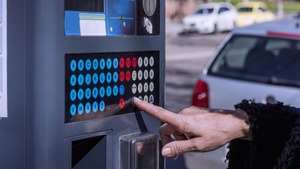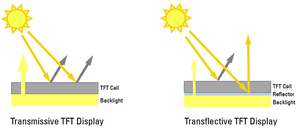
What's the difference between them and other types of displays? In this article, we will take a closer look at Transflective Panels and discuss how they operate.
Why would I want to consider Transflective Panels?
The main advantage of Transflective Panels is that they offer good sunlight readability.
They work by reflecting a portion of the light that hits them while allowing some light to pass through. This combination allows for a clear image to be seen even in bright conditions.

Another benefit of Transflective Panels is that they tend to use less power than other types of displays.
This is because they do not require backlighting, which can use a lot of power.
What are the challenges with Transflective Panels?
One challenge with Transflective Panels is that they can have lower contrast ratios than other types of displays.
This means that the image might not be as clear in low-light conditions.
Another challenge is that Transflective Panels can be more expensive to produce than other types of displays.
However, the benefits of Transflective Panels might outweigh the challenges for some applications.
Are there different types of Transflective Panels?
Yes, there are two main types of Transflective Panels: LCD and OLED.
LCD (liquid crystal display) Transflective Panels are the most common type.
OLED (organic light-emitting diode) Transflective Panels are less common but offer some advantages over LCD panels.
Which type of Transflective Panel is right for me?
The answer to this question depends on your specific needs.
If you need a display with good sunlight readability and low power consumption, then a Transflective Panel might be right for you.
If you need a high-contrast display that will be used in low-light conditions, then an OLED Transflective Panel might be a better choice.
No matter which type of Transflective Panel you choose, you can be confident that you're getting a display that offers good readability in direct sunlight.
Other things to consider when choosing a Transflective Panel
In addition to the factors we've already discussed, there are a few other things you might want to keep in mind when choosing a Transflective Panel.
First, consider the size and resolution of the panel you need.
Transflective Panels are available in a variety of sizes and resolutions, so it's important to choose one that will meet your specific needs.
Second, consider the viewing angle you need.
Transflective Panels typically have a narrower viewing angle than other types of displays, so it's important to make sure the panel you choose will offer the viewing angle you need.
Third, consider the brightness of the panel you need.
Transflective Panels are available in a variety of brightness levels, so it's important to choose one that will meet your specific needs.
Browse our range of Transflective Displays here


